Johannes Hirth
The Birkhoff completion of finite lattices
May 02, 2024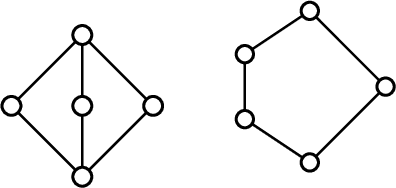



Abstract:We introduce the Birkhoff completion as the smallest distributive lattice in which a given finite lattice can be embedded as semi-lattice. We discuss its relationship to implicational theories, in particular to R. Wille's simply-implicational theories. By an example, we show how the Birkhoff completion can be used as a tool for ordinal data science.
Conceptual Mapping of Controversies
Apr 25, 2024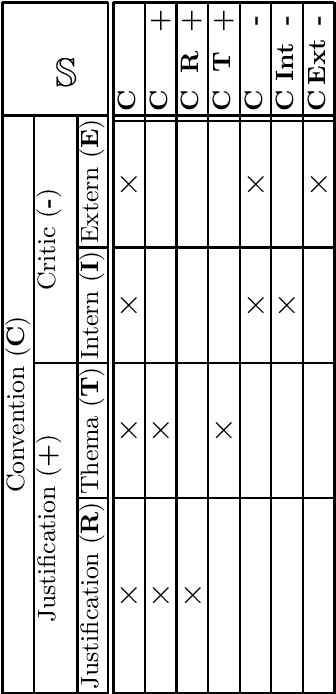
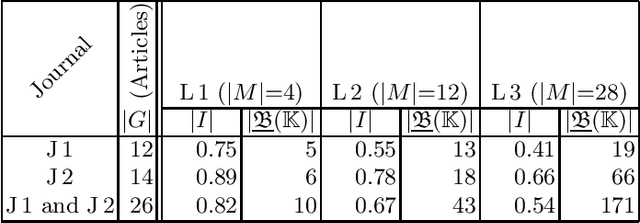
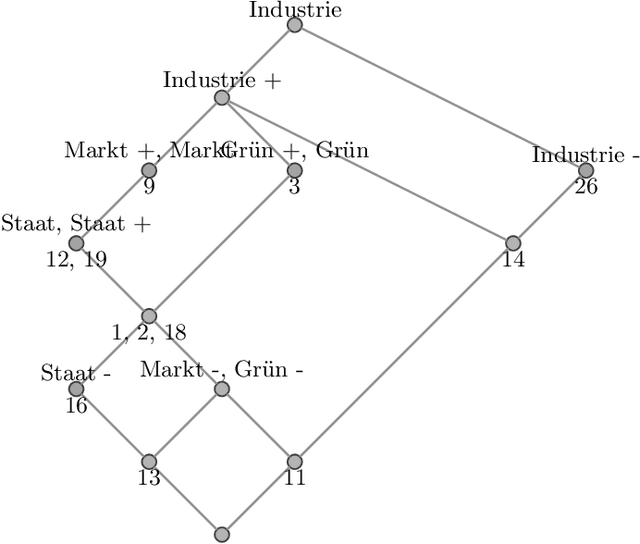

Abstract:With our work, we contribute towards a qualitative analysis of the discourse on controversies in online news media. For this, we employ Formal Concept Analysis and the economics of conventions to derive conceptual controversy maps. In our experiments, we analyze two maps from different news journals with methods from ordinal data science. We show how these methods can be used to assess the diversity, complexity and potential bias of controversies. In addition to that, we discuss how the diagrams of concept lattices can be used to navigate between news articles.
The Geometric Structure of Topic Models
Mar 06, 2024Abstract:Topic models are a popular tool for clustering and analyzing textual data. They allow texts to be classified on the basis of their affiliation to the previously calculated topics. Despite their widespread use in research and application, an in-depth analysis of topic models is still an open research topic. State-of-the-art methods for interpreting topic models are based on simple visualizations, such as similarity matrices, top-term lists or embeddings, which are limited to a maximum of three dimensions. In this paper, we propose an incidence-geometric method for deriving an ordinal structure from flat topic models, such as non-negative matrix factorization. These enable the analysis of the topic model in a higher (order) dimension and the possibility of extracting conceptual relationships between several topics at once. Due to the use of conceptual scaling, our approach does not introduce any artificial topical relationships, such as artifacts of feature compression. Based on our findings, we present a new visualization paradigm for concept hierarchies based on ordinal motifs. These allow for a top-down view on topic spaces. We introduce and demonstrate the applicability of our approach based on a topic model derived from a corpus of scientific papers taken from 32 top machine learning venues.
Automatic Textual Explanations of Concept Lattices
Apr 17, 2023Abstract:Lattices and their order diagrams are an essential tool for communicating knowledge and insights about data. This is in particular true when applying Formal Concept Analysis. Such representations, however, are difficult to comprehend by untrained users and in general in cases where lattices are large. We tackle this problem by automatically generating textual explanations for lattices using standard scales. Our method is based on the general notion of ordinal motifs in lattices for the special case of standard scales. We show the computational complexity of identifying a small number of standard scales that cover most of the lattice structure. For these, we provide textual explanation templates, which can be applied to any occurrence of a scale in any data domain. These templates are derived using principles from human-computer interaction and allow for a comprehensive textual explanation of lattices. We demonstrate our approach on the spices planner data set, which is a medium sized formal context comprised of fifty-six meals (objects) and thirty-seven spices (attributes). The resulting 531 formal concepts can be covered by means of about 100 standard scales.
Ordinal Motifs in Lattices
Apr 10, 2023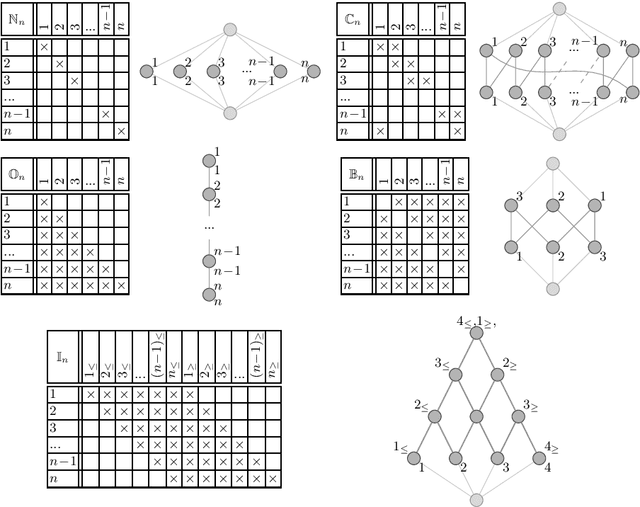

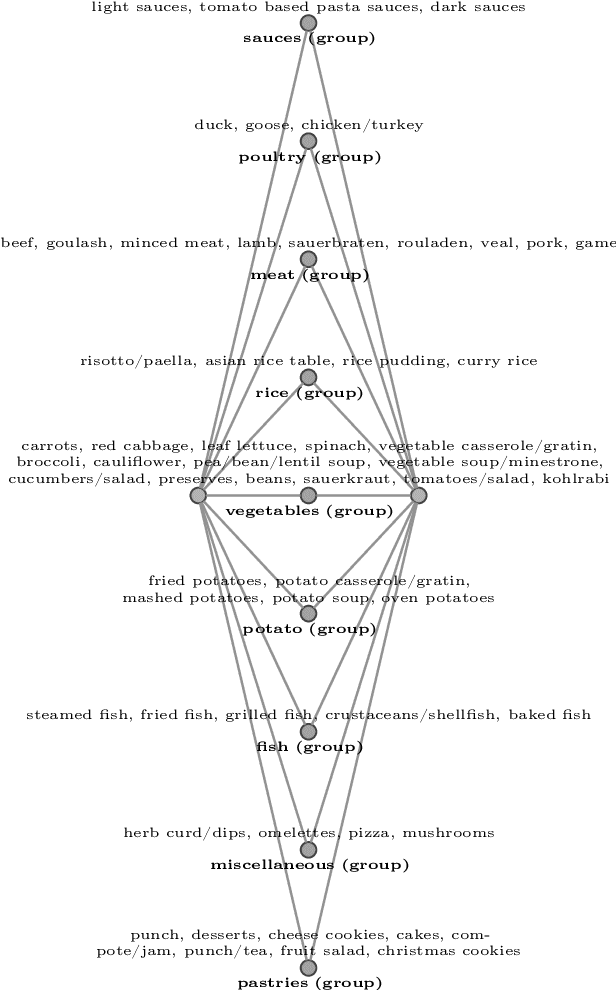
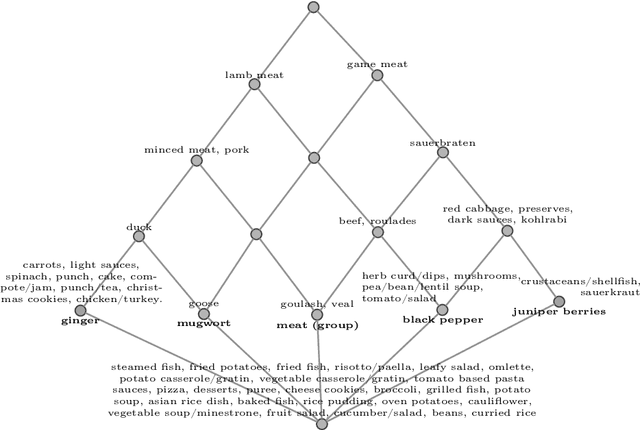
Abstract:Lattices are a commonly used structure for the representation and analysis of relational and ontological knowledge. In particular, the analysis of these requires a decomposition of a large and high-dimensional lattice into a set of understandably large parts. With the present work we propose /ordinal motifs/ as analytical units of meaning. We study these ordinal substructures (or standard scales) through (full) scale-measures of formal contexts from the field of formal concept analysis. We show that the underlying decision problems are NP-complete and provide results on how one can incrementally identify ordinal motifs to save computational effort. Accompanying our theoretical results, we demonstrate how ordinal motifs can be leveraged to retrieve basic meaning from a medium sized ordinal data set.
Scaling Dimension
Feb 17, 2023Abstract:Conceptual Scaling is a useful standard tool in Formal Concept Analysis and beyond. Its mathematical theory, as elaborated in the last chapter of the FCA monograph, still has room for improvement. As it stands, even some of the basic definitions are in flux. Our contribution was triggered by the study of concept lattices for tree classifiers and the scaling methods used there. We extend some basic notions, give precise mathematical definitions for them and introduce the concept of scaling dimension. In addition to a detailed discussion of its properties, including an example, we show theoretical bounds related to the order dimension of concept lattices. We also study special subclasses, such as the ordinal and the interordinal scaling dimensions, and show for them first results and examples.
Conceptual Views on Tree Ensemble Classifiers
Feb 10, 2023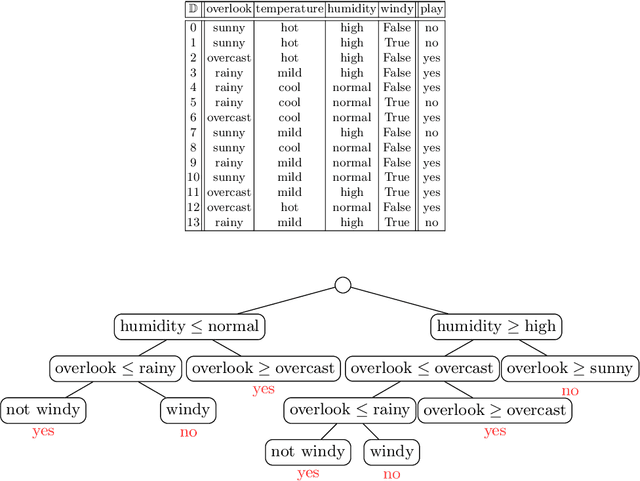
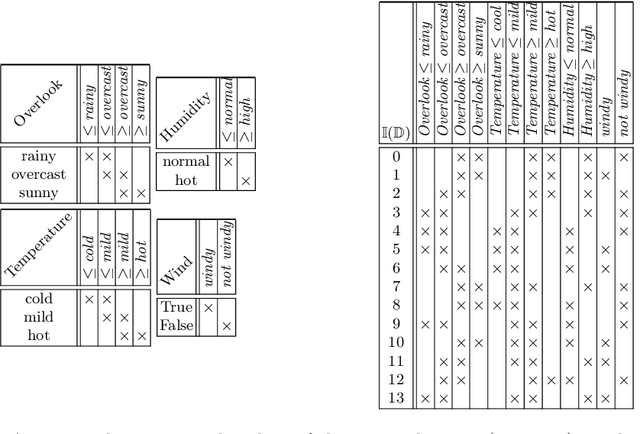

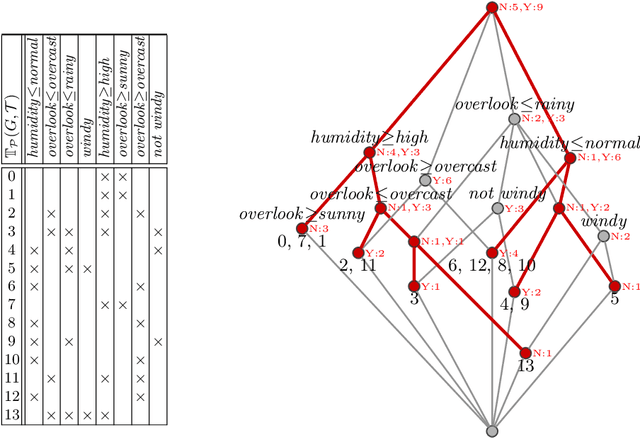
Abstract:Random Forests and related tree-based methods are popular for supervised learning from table based data. Apart from their ease of parallelization, their classification performance is also superior. However, this performance, especially parallelizability, is offset by the loss of explainability. Statistical methods are often used to compensate for this disadvantage. Yet, their ability for local explanations, and in particular for global explanations, is limited. In the present work we propose an algebraic method, rooted in lattice theory, for the (global) explanation of tree ensembles. In detail, we introduce two novel conceptual views on tree ensemble classifiers and demonstrate their explanatory capabilities on Random Forests that were trained with standard parameters.
Formal Conceptual Views in Neural Networks
Sep 27, 2022



Abstract:Explaining neural network models is a challenging task that remains unsolved in its entirety to this day. This is especially true for high dimensional and complex data. With the present work, we introduce two notions for conceptual views of a neural network, specifically a many-valued and a symbolic view. Both provide novel analysis methods to enable a human AI analyst to grasp deeper insights into the knowledge that is captured by the neurons of a network. We test the conceptual expressivity of our novel views through different experiments on the ImageNet and Fruit-360 data sets. Furthermore, we show to which extent the views allow to quantify the conceptual similarity of different learning architectures. Finally, we demonstrate how conceptual views can be applied for abductive learning of human comprehensible rules from neurons. In summary, with our work, we contribute to the most relevant task of globally explaining neural networks models.
Research Topic Flows in Co-Authorship Networks
Jun 16, 2022



Abstract:In scientometrics, scientific collaboration is often analyzed by means of co-authorships. An aspect which is often overlooked and more difficult to quantify is the flow of expertise between authors from different research topics, which is an important part of scientific progress. With the Topic Flow Network (TFN) we propose a graph structure for the analysis of research topic flows between scientific authors and their respective research fields. Based on a multi-graph and a topic model, our proposed network structure accounts for intratopic as well as intertopic flows. Our method requires for the construction of a TFN solely a corpus of publications (i.e., author and abstract information). From this, research topics are discovered automatically through non-negative matrix factorization. The thereof derived TFN allows for the application of social network analysis techniques, such as common metrics and community detection. Most importantly, it allows for the analysis of intertopic flows on a large, macroscopic scale, i.e., between research topic, as well as on a microscopic scale, i.e., between certain sets of authors. We demonstrate the utility of TFNs by applying our method to two comprehensive corpora of altogether 20 Mio. publications spanning more than 60 years of research in the fields computer science and mathematics. Our results give evidence that TFNs are suitable, e.g., for the analysis of topical communities, the discovery of important authors in different fields, and, most notably, the analysis of intertopic flows, i.e., the transfer of topical expertise. Besides that, our method opens new directions for future research, such as the investigation of influence relationships between research fields.
Quantifying the Conceptual Error in Dimensionality Reduction
Jun 12, 2021



Abstract:Dimension reduction of data sets is a standard problem in the realm of machine learning and knowledge reasoning. They affect patterns in and dependencies on data dimensions and ultimately influence any decision-making processes. Therefore, a wide variety of reduction procedures are in use, each pursuing different objectives. A so far not considered criterion is the conceptual continuity of the reduction mapping, i.e., the preservation of the conceptual structure with respect to the original data set. Based on the notion scale-measure from formal concept analysis we present in this work a) the theoretical foundations to detect and quantify conceptual errors in data scalings; b) an experimental investigation of our approach on eleven data sets that were respectively treated with a variant of non-negative matrix factorization.
 Add to Chrome
Add to Chrome Add to Firefox
Add to Firefox Add to Edge
Add to Edge